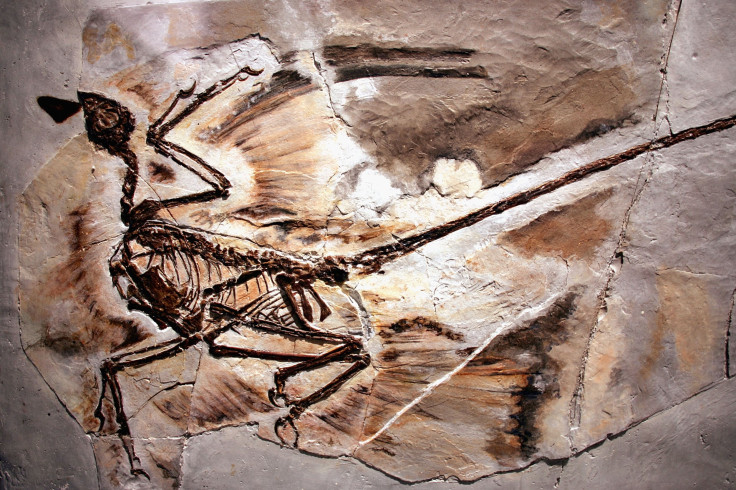Oldest Dandruff Discovered In 125-Million-Year-Old Dinosaur Fossil

An international team of researchers has discovered the extremely old case of dandruff in the fossil of a feathered dinosaur that lived some 125 million years ago.
Though looking for dandruff samples in long-dead dinosaur fossils sounds a tad weird, the discovery — which has been designated as the first as well as the oldest-known evidence of skin shedding in dinosaurs — is giving paleontologists insight into the early evolution of the weird skin feature and how it used to differ from the case of dandruff in modern-day animals.
Lead researcher Maria McNamara from University College Cork, Ireland, and team took a close look at the fossils of three feathered dinosaurs — Microraptor, Beipiaosaurus and Sinornithosaurus — and a primitive bird called Confuciusornis, discovered from rock formations in north-eastern China, the Guardian reported.
The examination revealed fossilized dandruff samples or tiny flake-like stuff in the feathers of all the animals, with four-winged Microraptor being the oldest among all. The group used a technique called electron microscopy to see the evidence of dandruff and their cellular structure in high resolution.
Just like human dandruff, the flakes spotted in these fossils were also made of corneocytes, dead cells rich in the protein keratin.
“The fossil cells are preserved with incredible detail – right down to the level of nanoscale keratin fibrils,” McNamara said in a statement. “What’s remarkable is that the fossil dandruff is almost identical to that in modern birds – even the spiral twisting of individual fibres is still visible".
The researchers compared their findings with dandruff samples from modern animals and demonstrated the tiny flake like stuff was more consistent with skin shedding in modern birds and mammals than in present-day reptiles that lose their skin’s outer layer in one go as a single sheet or several large pieces.
"It's unusual to be able to study the skin of a dinosaur, and the fact this is dandruff, proves the dinosaur was not shedding its whole skin like a modern lizard or snake, but losing skin fragments from between its feathers," study co-author Mike Benton said in the statement.
They also noted the discovery suggests dinosaurs started shedding skin during the late Middle Jurassic period or just around the same time when other skin features like feathers were evolving.
"There was a burst of evolution of feathered dinosaurs and birds at this time, and it’s exciting to see evidence that the skin of early birds and dinosaurs was evolving rapidly in response to bearing feathers," McNamara added.
However, it is also worth noting the animals studied in the work may not have had the ability to fly like modern-day birds back in the day. Unlike present-day birds, the dinosaurs' dandruff’s corneocytes were tightly packed with Keratin, a trait that suggests their skin wasn't involved in evaporative cooling and did not deal with the amount of heat usually generated from flying.
The study titled "Fossilized skin reveals coevolution with feathers and metabolism in feathered dinosaurs and early birds," was published May 25 in the journal Nature Communications.
© Copyright IBTimes 2024. All rights reserved.





















